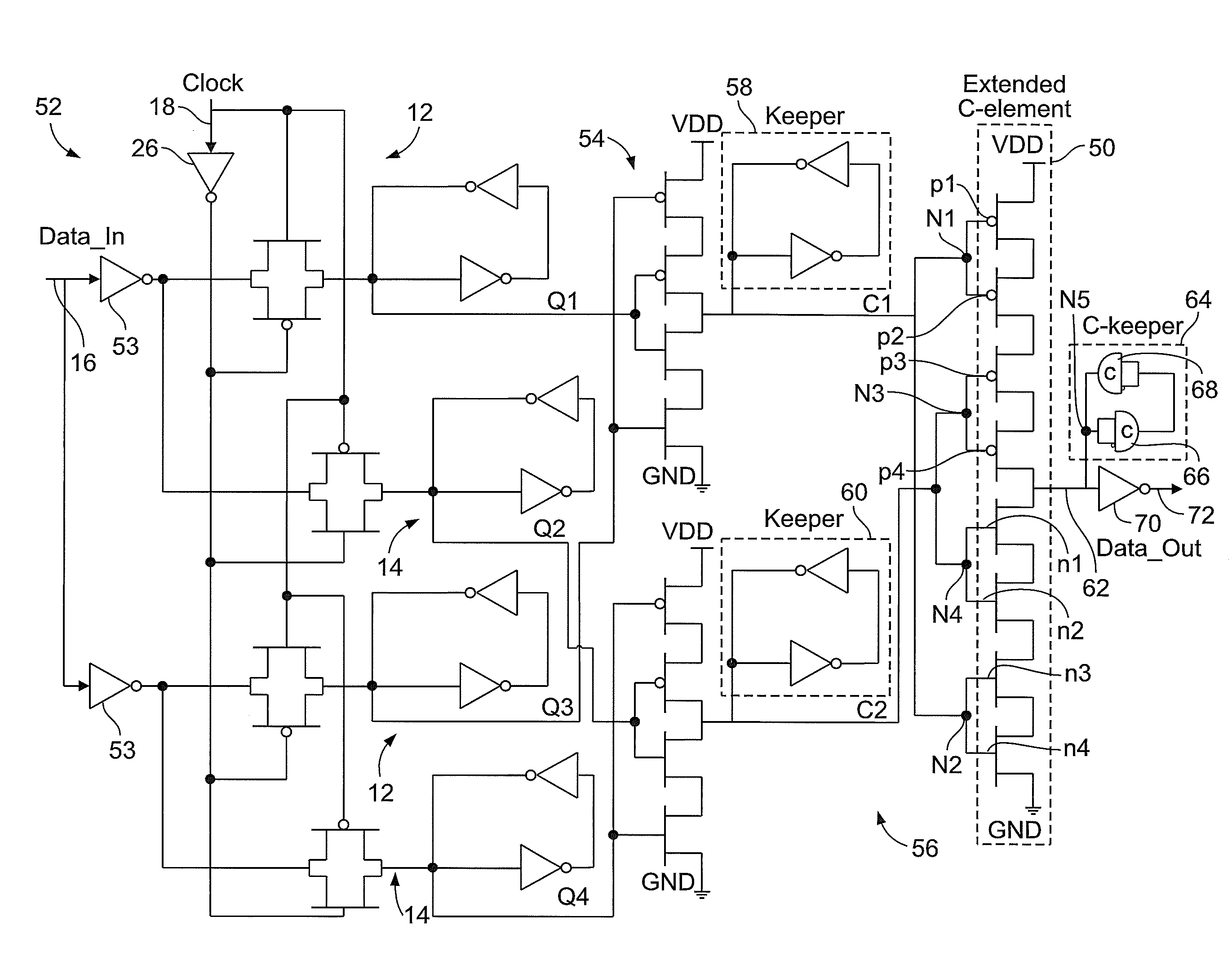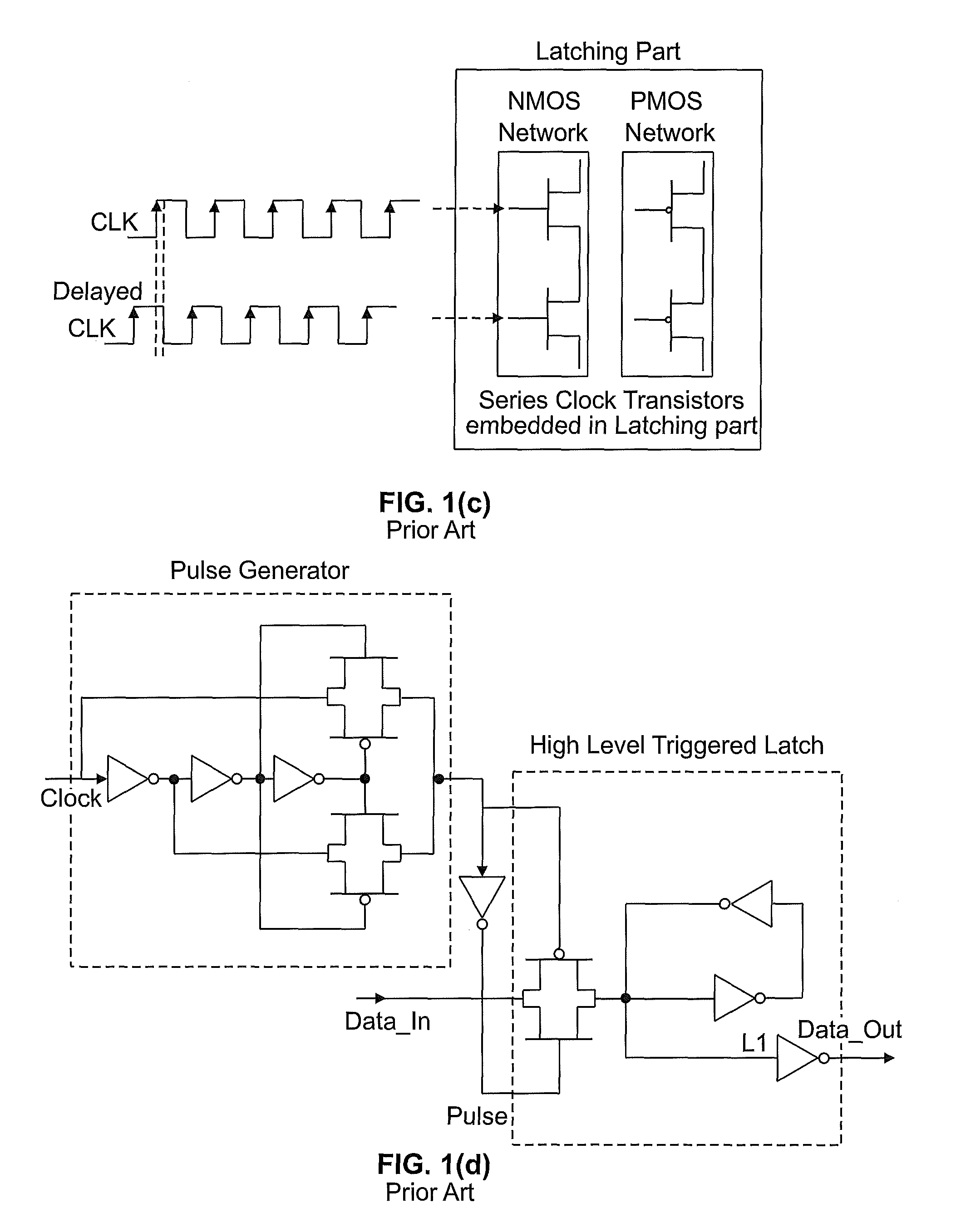Dual data rate flip-flop circuit
a flip-flop circuit and data rate technology, applied in the field of electric circuits, can solve problems such as undesirable changes in logic state of such circuits and changes in circuit logic states
- Summary
- Abstract
- Description
- Claims
- Application Information
AI Technical Summary
Benefits of technology
Problems solved by technology
Method used
Image
Examples
Embodiment Construction
[0040]Flip-flop circuits are widely used in digital circuits to store data. The power, delay, and reliability of the flip-flop circuits directly affect the performance and fault tolerance of the whole integrated circuit formed on a semiconductor chip. Therefore, it is imperative to carefully design flip flop circuits for minimum area, delay, power, and maximum reliability. DDR flip-flop circuits are preferred to enhance the data throughput and to reduce the power consumption of application specific integrated circuit (ASIC) chips. Unlike a regular flip-flop circuit, which stores the input data on only the rising edge of a clock pulse, a DDR flip-flop circuit stores the input data on both rising and falling edges of the clock pulse, which leads to a higher data throughput for the same clock frequency.
[0041]A new and robust DDR flip-flop circuit with low power consumption is provided. The DDR flip-flop circuit has a very low activity factor due to its hard edge property and low clock ...
PUM
 Login to View More
Login to View More Abstract
Description
Claims
Application Information
 Login to View More
Login to View More - R&D
- Intellectual Property
- Life Sciences
- Materials
- Tech Scout
- Unparalleled Data Quality
- Higher Quality Content
- 60% Fewer Hallucinations
Browse by: Latest US Patents, China's latest patents, Technical Efficacy Thesaurus, Application Domain, Technology Topic, Popular Technical Reports.
© 2025 PatSnap. All rights reserved.Legal|Privacy policy|Modern Slavery Act Transparency Statement|Sitemap|About US| Contact US: help@patsnap.com



